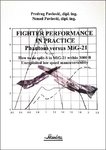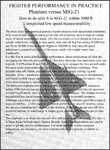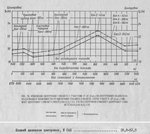syscom3
Pacific Historian
In design terms, the F-15 was/is a masterpiece of fabulous design for its role that is virtually unchanged (apart from the stealthy F-15SE prototype) in almost 40 years.
Counter that with the F-4 with its drooping tail and upturned wingtips that, whilst admittedly very cool, are only there because McDonnell made a total hash of the original design.
Separately, possibly the only other jet fighter, apart from the F-15, with a 100 per cent A2A combar record is none other than.....................................
The BAe Sea Harrier!
TA DA!
Dream on.



